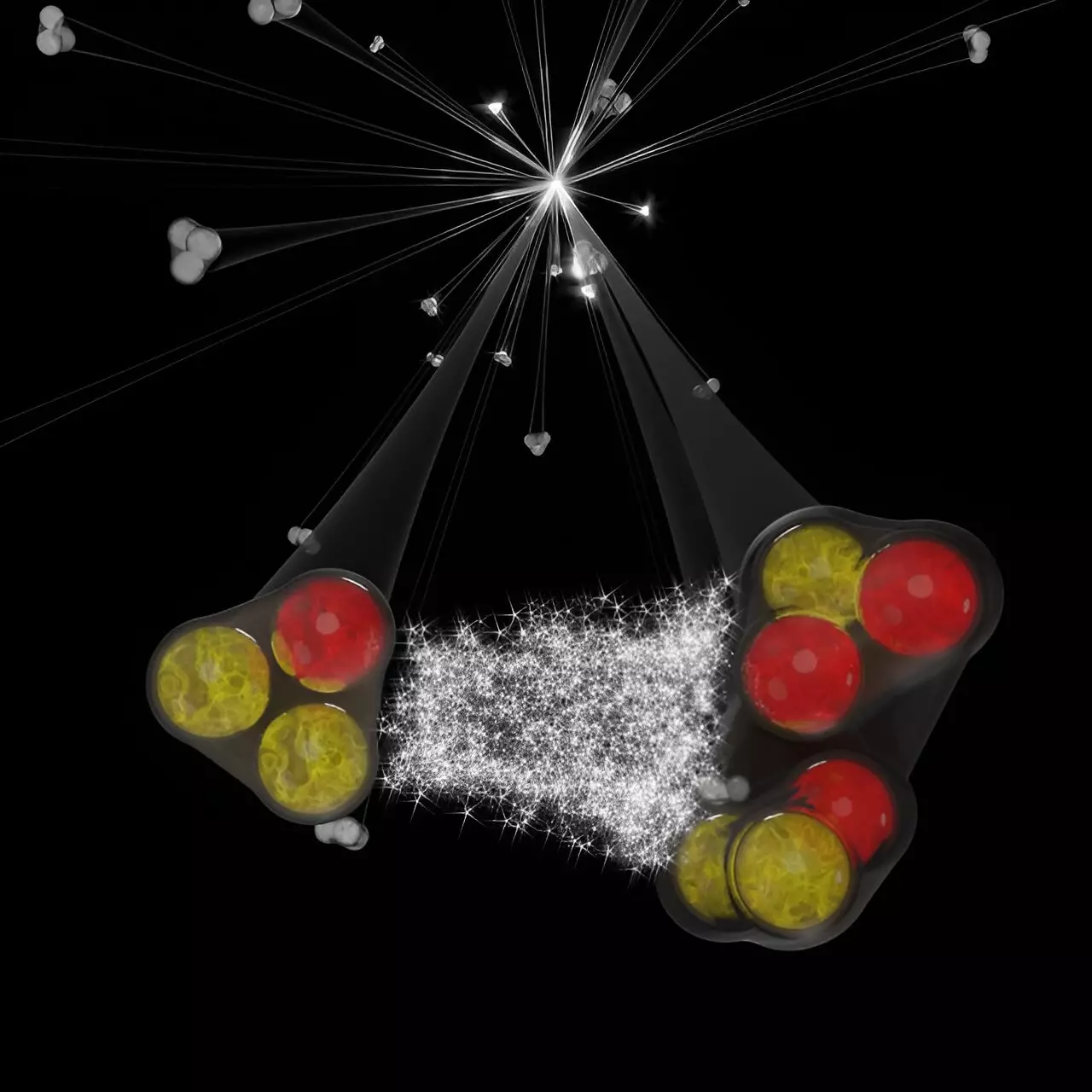In the realms of nuclear physics, grasping the complexities of three-body systems is crucial for understanding a myriad of physical phenomena, including the internal structure of atomic nuclei and the intricacies of high-density nuclear matter, such as that found in neutron stars. The recent study conducted by the ALICE collaboration and published in *Physical Review X* significantly sheds light on the correlations present in kaon–deuteron and proton–deuteron systems, thereby paving the way for in-depth analysis of the forces acting within three-body nuclear systems.
At the core of nuclear interactions lies the idea of fundamental forces, which traditionally are perceived as interactions between pairs of particles. Extending this concept to three-body interactions, however, presents a variety of challenges due to the complexities involved in their behavior. The nuances of three-body dynamics are often obscured by the intricacies of multiple interactions occurring simultaneously, making it imperative to develop robust models that can accurately describe these interactions in a coherent manner.
One of the focal points of the ALICE collaboration’s studies revolves around proton-proton collisions at the Large Hadron Collider (LHC) which occur at an extraordinary center-of-mass energy of 13 TeV. Within this environment, particles are ejected nearly in unison, often at incredibly close distances—about a femtometer (10^-15 m). It is this proximity that raises intriguing questions about how these particles might influence one another prior to dispersing. The interplay between momentum, quantum statistics, and fundamental interactions becomes significant when dealing with particle pairs produced nearly simultaneously.
The innovation at the heart of ALICE’s work lies in correlating particles, specifically analyzing how the measurement of relative momenta can diverge from the expectations when assuming independence in their distributions. The correlation function serves as an essential tool here; a baseline value of unity indicates no correlation, while deviations signify attractive or repulsive forces at play. Notably, the current results indicate that both kaon-deuteron and proton-deuteron correlations display values below unity at lower relative transverse momenta, suggesting a predominance of repulsive interactions—an observation that reshapes our understanding of these fundamental forces.
The complexity of modeling interactions was further emphasized through distinct findings between the kaon-deuteron and proton-deuteron correlations. While the kaon-deuteron correlations can be well defined by a two-body model incorporating both Coulomb and strong interactions, the proton-deuteron case reveals limitations in this approach, requiring a shift to a full three-body calculation. This necessity underlines the inherent differences in how various particle interactions manifest and the importance of accurately accounting for nucleon structure.
Alongside these findings, the innovative methodology offered by the correlation measurements has the potential to significantly enhance our understanding of three-body systems. By demonstrating sensitivity to short-range interactions within the three-nucleon system, the study provides a foundational framework that could extend to other forms of matter and future experimental investigations at the LHC.
As the ALICE collaboration continues to refine its techniques and expand its database, the implications of these findings are vast. Future explorations, particularly during LHC Runs 3 and 4, are anticipated to delve deeper into three-baryon systems as they pertain to flavors such as strange and charm, thus broadening the horizons of nuclear physics research. With each new discovery, researchers stand on the edge of potentially transforming our understanding of the very fabric of matter, coupling theory with empirical data in the quest to unravel the mysteries of the universe.
The advances reported by the ALICE collaboration not only contribute to the existing knowledge surrounding three-body nuclear interactions but also highlight the need for ongoing studies that embrace the complexities of particle physics. The results leverage a rich interaction of theory and experimental data, propelling the field toward revelations that may redefine our conception of fundamental forces and their manifestations in the atomic and subatomic realms. In navigating the challenges posed by three-body systems, scientists inch ever closer to unraveling the deeper mysteries that govern the universe.


Leave a Reply